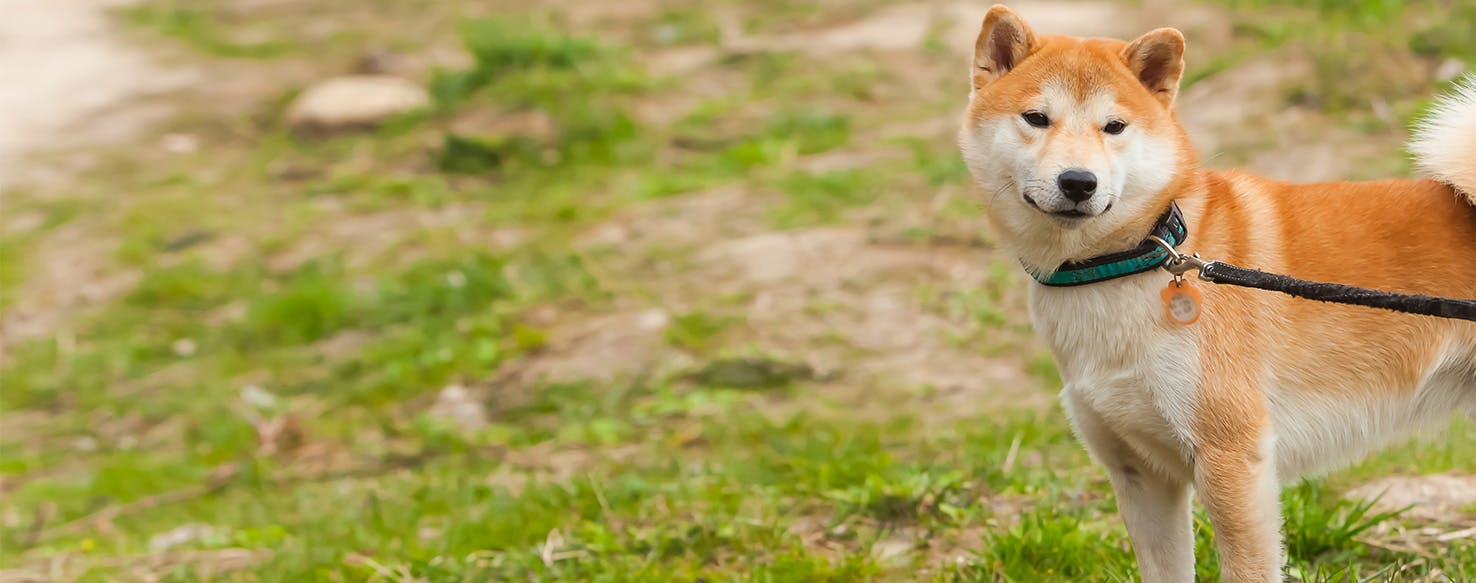- Home
- The Daily Wag!
- Behavior
- Why Do Dogs Become Aggressive When On Their Leash

Common
Irregular
Is it one of those days again? You’re out walking your dog and suddenly all hell breaks loose: he starts to lunge, bark, and snap at the sight of another dog. As much as it is a common problem in dog behavior, this type of aggressive reaction is nevertheless frightening and embarrassing to you as well. Have you ever wondered if there is a certain cause that triggers them to act this way or are you simply saying: “Really, he’s very sweet. He only does this on the leash!”
The reality is, as sweet as your dog may be, he has less-than-stellar social skills to cope with this type of situations.
Picture a child running onto a playground and putting another kid in a headlock as his special and only way of saying: “Let’s be friends!" That is pretty much the same thing that happens to your furry friend whenever he is leash lunging and barking. When a dog lacks the proper social skills to help him cope with any given situation, he will be tensed and frustrated, and thus… he will act accordingly. The truth is, many dogs that show these traits crave interaction with other dogs, but they just do not know how to show it. Their desire to form a relationship with the other dog is translated into lunges and barks, instead of naturally greeting from the side and sniffing each other’s genital area (which is how they would react in a normal, off the leash situation).
This happens because, when dogs meet on a leash, they are typically forced to approach head-on and are unable to turn their bodies. In return, they perceive this as a situation where you, as the owner, want him to fight with the other dog. Of course, this is exactly the opposite of your intentions. Most dogs do not want to fight, so they display a number of behaviors that are designed to prevent this such as barking, lunging and growling.
When attached to a leash, dogs have a natural tendency to feel restrained, frustrated, and uncomfortable. On the other hand, this does not mean you have to walk your dog off-leash, but rather that you need to teach him some basic social skills and desensitize his reactions with the help of professionals, should that be the case.
More so, whenever you turn your dog away from the fight, you reinforce his behavior by increasing distance. It is a vicious cycle of tension and leash lunging, that needs to be interrupted.
Need advice about your pet's health?
Get answers fast from a veterinary professional 24/7 in the Wag! App.
Get Vet ChatOne thing is for sure: your dog needs to release that frustration you keep reinforcing day by day. How can you achieve this? Well… stop reinforcing it. Easier said than done, but don’t fret just yet. One of the most obvious and efficient ways to help your dog ease their anxious behavior when on a leash is to bring in a professional. A qualified trainer can help you evaluate your dog to see if this is a typical case of leash aggression, or if there is something else going on. After ruling out any medical causes, the veterinary provider will be able to read the native language of your doggie and turn to off-leash interactions with dogs. Yes, it sounds a bit counterintuitive, however, a professional dog trainer will easily recognize play when it’s really tension, and tension when it’s really play.
On your part, make sure you never punish your dog for lunging out of his leash, especially if the cause of the behavior is insecurity. Punishment can only make things worse, because your dog will begin to associate the punishment with the situation he is so frighten of. If you punish him for reacting badly at the sight of another dog, his math will be fairly simple: approaching dog equals pain and fear.
The best thing you can do is start decreasing your dog’s frustration when he is on the leash. How can you do that? It is actually pretty simple. Whenever you feel he is ready to start “attacking,” turn his attention away from the leash and back to you. You need to have some high-value type of treats that you can only use outside and whenever you see other dogs approaching. In this way, you will teach your pup that when he sees another dog, he will be rewarded for looking at you. Keep up this game for a week or so and make sure he is hungry enough for it each time you decide to play.
By using proper training, patience, dedication and consistency, your dog will be able to walk on a leash without overreacting at the sight of another animal. Be sure to ask for professional help if your furry friend feels overly excited when meeting another dog, and regain control of the situation by teaching him some well-needed manners.
Written by a Amstaff lover Marieta Murg
Veterinary reviewed by:
Published: 03/07/2018, edited: 01/30/2020
More articles by Marieta Murg

